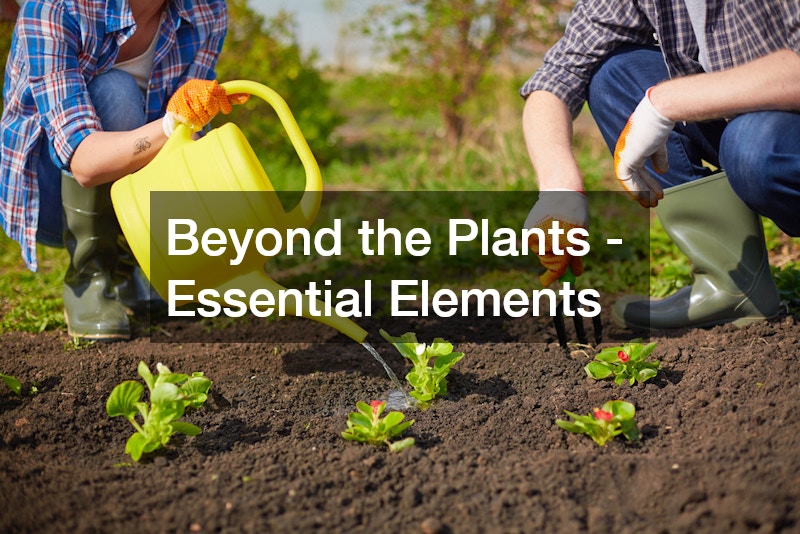A garden full of vegetables that are bursting with flavors and fresh from the ground is a powerful motivation. Before you start planting seeds in your garden, it is important to have a plan. This guide will give you the information to create a garden that thrives and produces a plentiful harvest.
Location
A thriving vegetable patch begins with choosing the right spot. The sun is your friend – choose a spot that gets at least 8 hours of direct sunshine daily.
Be aware of how the shadows change throughout the day. This is especially important during summer. Even shady areas are productive. However, they will be more suitable for certain vegetables such as lettuce or spinach.
Another important factor is drainage. Soggy soils can lead to plant disease and suffocate the roots. Consider raised beds if the location you want to plant in has poor drainage. These raised planting areas offer improved drainage, as well as additional benefits such as easier access and warmer temperatures of the soil in early spring.
Design Your Garden on Paper

It’s now time to turn your vision for your garden into reality. Three main approaches are available:
Grab your pencil and paper to sketch it out! Sketching is a tactile and creative experience. Draw an outline of your garden including any existing features such as trees or fences. Sketch the location of your raised bed or planting area, keeping in mind future expansion.
Making a spreadsheet is a great way to organize your garden. List the vegetable varieties you want to grow along with their preferred sun exposure and maturation time. This information can be used to plan your planting and ensure that you have the right spacing for your garden.
Garden planning software is a great way to plan your garden. It’s easy to use and offers an attractive visual design. Many programs have built-in features such as crop rotation suggestions or companion planting tips.
Whatever method you choose, your garden should be flexible. You’ll want to experiment with new plant combinations and tweak your design as you gain more experience.
Planting like a pro: mastering the layout
Here comes the fun part: laying out all your plants for your garden design. Here are some important considerations:
Group plants that require similar amounts of sun together. Plant vegetables that love the sun, like tomatoes and peppers, in prime locations with maximum sunlight. Leafy greens, root vegetables, and other plants that tolerate shade are ideal for places with less direct sunlight.
Size and spread of plants: When laying out your plants, consider the mature size. Plants that are taller, like corn, should be placed at the back of the bed to avoid shading their shorter counterparts. Plants that spread out, like melons and zucchini, need plenty of space. Place them strategically at the edge of your garden beds so that they don’t smother other vegetables.
Planting in succession will maximize your harvest over the course of the season. This involves planting fast-maturing plants early in the growing season and then planting slower-maturing varieties in their place at a later date. You can interplant fast-growing lettuce with slower-growing tomatoes.
Beyond the Plants – Essential Elements

A successful garden is not just about the plants. Watering is important for healthy plants. Plan your water supply. Water-intensive plants can be grouped together to make watering more effective. Rain barrels can be a great tool to save water and to provide irrigation for your garden.
- Convenience: Consider how often you will need to visit different areas when planning your garden. For easy harvesting, it is best to place vegetables that are frequently harvested near your home.
- Pollinators are essential to a healthy vegetable garden. Planting flowers rich in nectar throughout your garden will attract bees and butterflies. This will improve your yields.
- Composting creates nutrient-rich food that your plants can use. Compost bins or piles can be placed in a small area of your garden. You can quickly add organic matter to the soil by having easy access to your compost.
- Seedlings: You may include a mini-greenhouse or cold frame in your garden plan, depending on the climate. These structures offer a safe environment to start seeds early in the growing season or nurture tender crops.
Bring Your Garden Design to life
Now that you have a plan, it is time to turn your vision into a reality. Here are a few final tips.
Test your soil’s pH before planting and amend it as necessary. Most vegetables like slightly acidic soil between pH 6.0 and 7. Compost will help improve drainage, aeration, and nutrients, creating an environment that is healthy for your plants.
Start planting. Refer to your planting schedule and start sowing seeds outdoors for vegetables such as carrots, beets, and peas. These are the types of plants that do not like to be transplanted. Start seeds indoors for other vegetables a few weeks prior to the last date of frost in your area. Before transplanting seedlings into your garden, harden them off gradually.
Maintenance of your garden is essential. Regular weeding and watering are necessary for a healthy vegetable garden. Watch for any signs of insect or disease damage, and take action as soon as possible using organic methods.
Harvesting is fun! Harvesting your own vegetables is the most satisfying part of planning. For the best taste and nutrition, pick vegetables when they are at their ripest. Try out different recipes, and then enjoy the fruits of your labor.
A perfect vegetable garden will never be complete. You can improve your garden design as you gain more experience and learn how plants respond to you. Enjoy the process of learning, spend time outdoors, and enjoy the bounty of your own vegetable garden.
